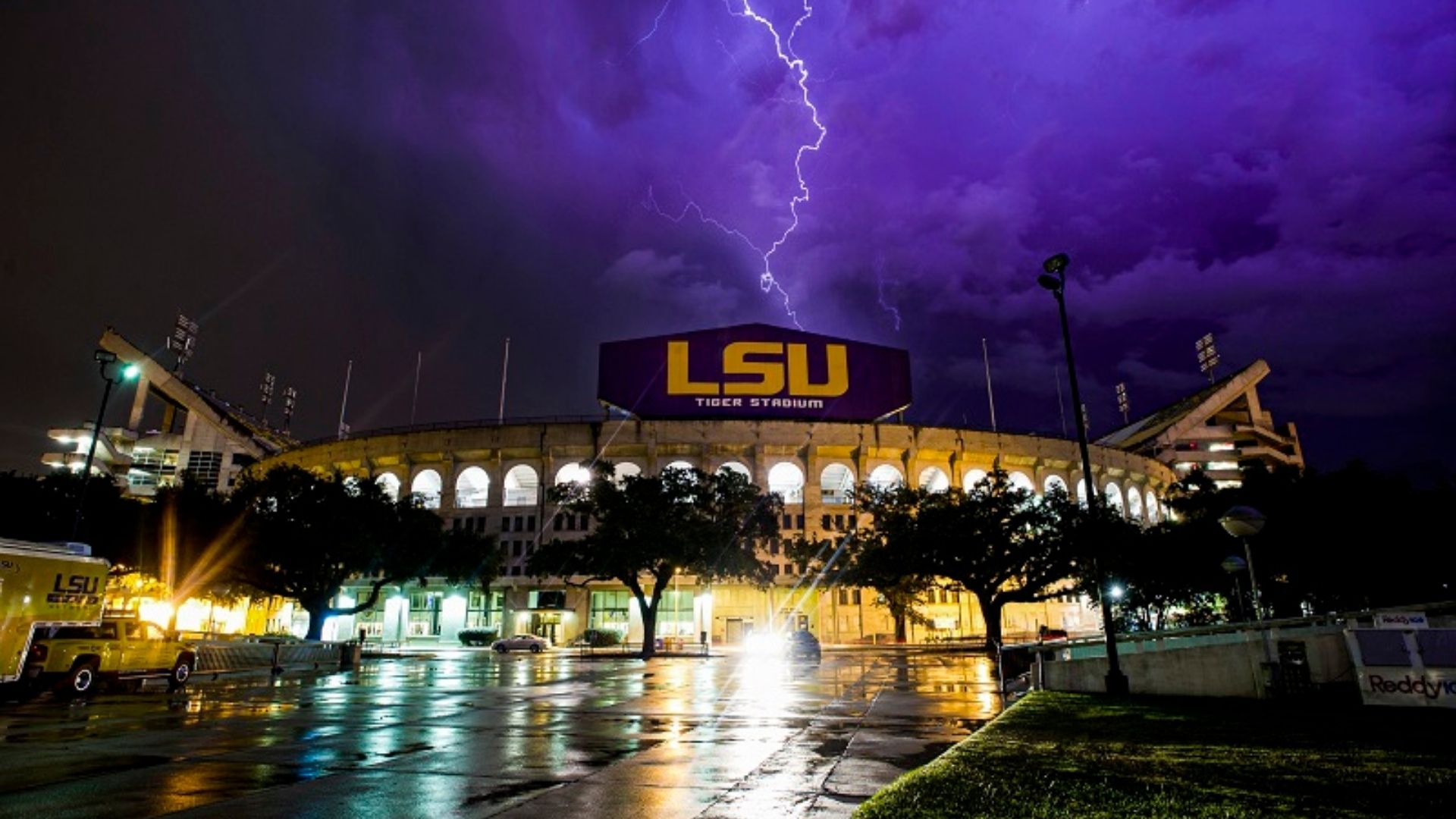Coastal Meteorology at LSU
March 07, 2022
Excerpt from From Air to Land to Sea: 50 Years of Educating Coastal Leaders (publication forthcoming)
 As seen all too frequently on the news, severe and unusual weather endangers human
and animal health and well-being, habitats, ecosystem productivity, and economic,
transportation, and food security. While it may seem like a modern topic that has
been seen with more regularity in the last decade or so, it is far from “new” as an
area of concern or academic interest. In fact, it is an area that has been studied
with avid interest at LSU for many decades. In fact, the founder of the Coastal Studies
Institute, Richard J. Russell, was arguably LSU’s first atmospheric scientist. In
addition to his many other accomplishments, his fascination with climate variability—in
an era when many did not accept the notion that climates change—led him to innovate
the use of “spaghetti maps” of climatic type boundaries.
As seen all too frequently on the news, severe and unusual weather endangers human
and animal health and well-being, habitats, ecosystem productivity, and economic,
transportation, and food security. While it may seem like a modern topic that has
been seen with more regularity in the last decade or so, it is far from “new” as an
area of concern or academic interest. In fact, it is an area that has been studied
with avid interest at LSU for many decades. In fact, the founder of the Coastal Studies
Institute, Richard J. Russell, was arguably LSU’s first atmospheric scientist. In
addition to his many other accomplishments, his fascination with climate variability—in
an era when many did not accept the notion that climates change—led him to innovate
the use of “spaghetti maps” of climatic type boundaries.
Nevertheless, the beginning of coastal meteorology in what has become LSU’s Department of Oceanography & Coastal Sciences (DOCS), began with S.A. Hsu, a PhD graduate of the University of Texas who joined the department in 1968. Hsu pioneered many ideas useful from an applied engineering and airsea interaction perspective with support from many, including Oscar Huh and Nan Walker of the Earth Scan Lab. In addition to more than 250 refereed articles in most of the top journals in the field, Hsu’s Coastal Meteorology (Academic Press, 1988) was the world’s first textbook of its kind and catapulted LSU into recognition as a world leader in coastal meteorology, which is an integral part of coastal physics. The book remains a juggernaut in its field. Hsu retired after an illustrious 40- year career at LSU and continues publishing today. One of his most recent articles provides a representative example of his expertise: “Air-sea-land interactions during tropical cyclones” in Encyclopedia of Water: Science, Technology and Society, Chapter 124, pp. 1345-1358, by Wiley in 2020.
In the classroom, Hsu taught Environmental Pollutant Transport Processes, Coastal Air-Sea Interaction, and many others. On campus and beyond, Hsu’s specialization in coastal meteorology was unchallenged, even as the “climate” side of atmospheric sciences was being pioneered by Robert A. Muller in LSU’s Department of Geography & Anthropology (G&A). Upon Hsu’s retirement, Chunyan Li continued in coastal meteorology research at LSU, particularly in weather effects on the coastal ocean. By 2017, Robert Rohli, whose doctoral committee included both Hsu and Muller, had moved from LSU G&A to DOCS, where an online course on coastal meteorology was developed for the first time, and the Coastal Louisiana chapter of the American Meteorological Society (CLAMS) was re-established.
The arrival of Paul Miller in 2018 added mesoscale coastal meteorology and modeling the marine atmosphere to the portfolio of teaching and research in DOCS. Shortly thereafter, a unique graduate program specializing in coastal meteorology, linking multiple sciences to enable students to make informed decisions about managing coastal and environmental assets, was established as well as a graduate minor and an undergraduate concentration in coastal meteorology. In 2021, new faculty hires Cheryl Harrison and David Trossman added further breadth and depth to the program. In early 2022, Meteorology for Coastal Scientists, by Rohli and Li, is due to be released, ensuring that the DOCS legacy of being on the cutting edge of atmospheric and environmental science research continues well into the 21st century.